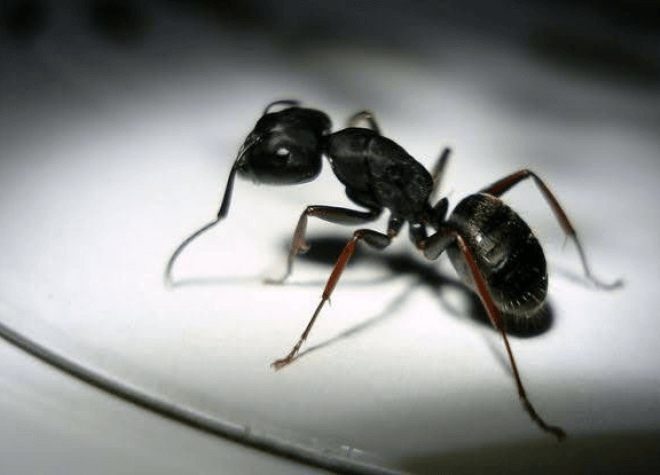5 Ants That Can Bother Indiana Homeowners
Admin • October 20, 2021

When you consider that Indiana plays host to an astonishing 136
different species of ants, you can easily see why ant infestations present ongoing problems for Hoosier State homeowners. Some ants may take up residence in your home, while others prefer to nest in your lawn or other outdoor areas.
You can gain a clearer understanding of your ant problem and its possible solutions by recognizing exactly what kinds of ants you have to deal with. Acquaint yourself with five ant species worth watching out for, from what they look like and how they live to what specific challenges they may pose for you and your loved ones.
1. Carpenter Ants
Carpenter ants usually appear black in color, although they can also have a brown coloration. The workers can grow up to half an inch
in length, making them fairly easy to spot and identify. These wingless ants get their name from their habit of digging through wood in search of an open space for nesting.
Although the excavations carpenter ants carry don't cause as much structural damage to homes as those of termites, they can still prove a destructive nuisance for homeowners. These ants especially like rotted wood, so make moisture control a priority and remove any rotted stumps or boards from your property.
2. Thief Ants
Thief ants earn their nickname for their habit of breaking into food packages and dining on the contents. These ants have a strong attraction for proteins and greasy substances, causing them to zero in on pantries and kitchens. These tiny, yellowish-brown creatures can easily enter homes through tiny gaps in walls and woodwork.
Although thief ants don't pose a stinging or biting threat to occupants, they may transmit any diseases that they pick up from their other common food sources, including dead insects and insect larvae. An ongoing pest control program will help you limit thief ant infestations in your home.
3. Odorous House Ants
Like thief ants, odorous house ants can find plenty to eat in the average Indiana home. They especially love any kind of sweet or sugary food sources, which may compel them to raid your kitchen and consume any exposed fruits, potentially contaminating them in the process.
Thankfully, odorous house ants don't bite or sting. Less thankfully, they emit a powerful rotten odor when crushed. Instead of squashing these tiny ants, focus on minimizing their access to attractive foods. Store your sweets in secure containers, take out the trash frequently, and keep outdoor garbage bins tightly sealed.
4. Pavement Ants
You might not assume that something called a pavement ant would serve as a problem for your home. These ants resemble odorous house ants in size and appearance, except that their heads feature tiny grooves. As the name suggests, pavement ants tend to live under structures such as pavement stones and foundation slabs.
Unfortunately, pavement ants don't confine themselves to pavement. They can easily make their way into homes, where they may consume a wide variety of substances, from kitchen food supplies to dead bugs. They don't usually hurt humans, but they can bite or sting when threatened.
5. Fire Ants
Although fire ants mostly inhabit the southern regions of the U.S., they occasionally make an appearance in Indiana yards. These small red ants create large mounds of dirt when making their nests, breeding in great numbers underground and creating serious problems for property owners.
The other main distinguishing characteristic of fire ants involves their stinging ability. A fire ant's sting contains a venom that causes severe pain and burning. The site of a fire ant sting can also become infected if you don't take prompt steps to clean and sterilize it.
Whether your ant infestation threatens mere annoyance or genuine health concerns for you and your loved ones, you don't have to coexist with these pests. Contact
American Pest Professionals today to schedule an inspection and skilled, professional treatment from our experienced team.









